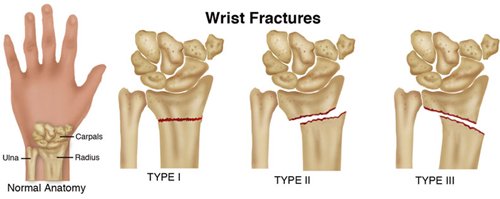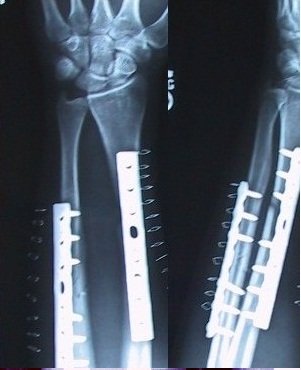nalco group
bone, muscle & joint pain physio
BOOK NOW / WHATSAPP ABOUT YOUR PAIN OR INJURY
- ORCHARD 400 Orchard Road #12-12 Singapore 238875
- TAMPINES 9 Tampines Grande #01-20 Singapore 528735
- SERANGOON 265 Serangoon Central Drive #04-269 Singapore 550265
Home > Blog > Hand Therapy & Customized Splinting > Finger,
Hand, Wrist, Forearm & Elbow Conditions > Broken Wrist Hand Therapy Novena
Broken Wrist Hand Therapy Novena

Also known as "Colles fractures", broken wrists are such common conditions that happens whenever a person falls with outstretched hands to "break" their falls, which in turn, breaks/fractures their wrists.
symptoms of broken wrist
The symptoms include
- mild to severe pain in wrists
- wrist unable to move
- swollen wrist
- "dinner fork" deformity of the wirst
- weakness of the wrist and hand that is affected
- inability to move and grip on the affected hand
If you think or suspect that you have a broken wrist, or your friend or someone close to you has it, take him or her as soon as you can to the doctor/accident and emergency (A&E) unit of your local hospital immediately.
If there is no broken skin (ie no bleeding etc), then you should/can also wrap the wrist in ice packs (cold therapy) to decrease the pain and swelling (note: never put ice packs directly, so it should be layers: skin > towel > ice packs > towels).
what will happen in accident & emergency departments

There the doctor will get you to do an X-ray to confirm the severity of your wrist fracture, which will determine the solutions provided:
- mild fracture with little to no rotation: possibly can be treated with simple plaster-of-paris casting or thermoplastic splinting with pain killers
- moderate-bad fractures with dislocations/rotations: higher likelihood of surgical requirement to bring and correct the alignment of the broken pieces
The same can be done by seeing an orthopedic doctor (we recommend) as it'd be much faster service and therefore your injured/broken wrist can be attended to as quickly as possible.
hand therapy / physiotherapy for broken wrists

Regardless which route of treatment the doctor decides on (be it plaster casting, splinting or surgery), you will almost immediately begin with hand therapy and physiotherapy for your broken wrist.
Our focus as
- specialist
hand therapists: to ensure that the unaffected joints and muscles of
the fingers and elbows receive full range of motion exercises and
treatment
- specialist physiotherapists: to ensure that the unaffected joints and muscles of the shoulder receive full range of motion exercises and treatment
These are to prevent any risks of stiffness a result of fear, pain and non-mobility because of guarded movements. Of course, these therapies also helps to decrease pain, swelling and inflammation due to muscle pumping.
If the doctor recommended/decided on plaster casting, and assuming that the wrist bones heals completely without any complications, then the plaster cast can usually be removed after about 6-8 weeks. When the cast is removed, we will start a lot more active physiotherapy and hand therapy interventions.
If the doctor decided for splinting or surgery using plates and screws, active hand therapy sessions and interventions will be started immediately and intermittently; but of course with with wrist fracture precaution.
That means that wrist fracture hand therapy/physiotherapy sessions will do active or active-assisted range of motion activities to maintain
- joint integrity
- range of motion
- prevent muscle wastage
- prevent joint and structural tightness
When the orthopedic surgeon confirms that the broken bones integrity (ie healing is good and stronger) has improved, we will start more active hand physiotherapy interventions, such as passive and resistive exercises.
Whenever necessary, we will also perform manual therapy such as mobilization and manipulation of soft tissue and joints to decrease the amount of stiffness and to provide pain relief and improve the range (better range = better function and strength).
We will gradually progress to strengthening as well, which will include carrying weights and engaging in progressively resistive activities. Your wrist will be provided with heat therapy such as wax moist heat and heat packs to loosen the wrist joints and wrist structures as well as improve vascularity for accelerated healing and pain relief.
To support your wrist, we may prescribe hand and finger exercise therapy using theraputty, hand therapy equipment as well as finger and grip strengthening exercisers to strengthen the muscles of the fingers and wrist, as this will become a natural gauntlet to protect the healing broken wrist.
Once we've achieve 100% of
- wrist, grip, pinch, thumb and finger strength
- wrist, grip, pinch, thumb and finger movement
- wrist, grip, pinch, thumb and finger stamina
Then we will discharge patients from hand therapy =)
